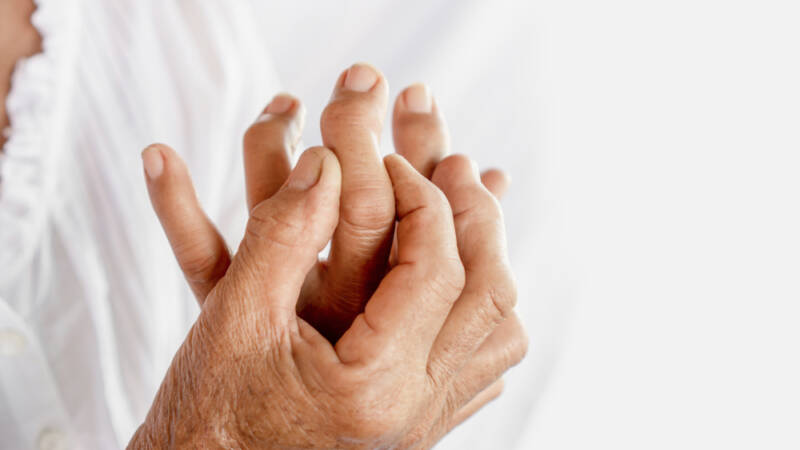Everything You Need To Know About Rheumatoid Arthritis

Rheumatoid arthritis (RA) is an autoimmune disease that develops when the immune system mistakes the healthy cells in the lining of the joints as intruders and attacks them, causing inflammation and pain. Overtime, this can cause permanent joint damage and even deformity.
RA usually affects more than one joint at a time, particularly in the hands, wrists, and knees. Early on, symptoms may appear in the smaller joints of the fingers and toes. However, the disease can eventually affect other parts of the body including the eyes, heart and lungs.
While the exact cause of RA is unknown, medical research has discovered some factors increase the risk of developing it. These risk factors include genetics, being a female, and certain lifestyle behaviours like smoking and obesity.
Types
There are three types of rheumatoid arthritis, including:
Juvenile RA: Although RA is more common in the elderly, juvenile idiopathic arthritis occurs in children under the age of 17 years and has symptoms similar to those suffered by adults.
Seropositive RA: To make a diagnosis, a test to detect rheumatoid factors or anti-CCPs – proteins produced when the immune system is attacking normal cells – is carried out alongside other tests. Over 80 percent of people living with RA test positive for these proteins and therefore have seropositive RA. This type results in more severe symptoms than in seronegative RA.
Seronegative RA: A small percentage of people test negative for rheumatoid factors which is why this test alone is not sufficient to diagnose RA. Physical examination, patient history, other blood tests and x-rays can be done to confirm a diagnosis.
Early Signs and Symptoms
The signs and symptoms of RA tend to fluctuate between flare ups and remission with varying degrees of time in between them. Some of the common early signs include:
- Morning stiffness
- Joint pain, swelling and redness of the skin around the joint
- Numbness and tingling
- Loss of joint range of motion
- Identical symptoms on both sides of the body (i.e. both hands)
- Fever
- Fatigue
- Loss of appetite
- Weight loss
Treatment Options
This disease affects over 1.3 million Americans of which about 75 percent are women. There is currently no known cure, however, available treatments can address symptoms and improve the patient’s quality of life. The following are some of the most common options:
Medication:
- Disease-modifying anti-rheumatic drugs (DMARDs), which are used to slow the disease and prevent joint deformity.
- Non-steroidal anti-inflammatory drugs (NSAIDs), which are quick-acting drugs administered to reduce pain and inflammation.
- Biological therapies, which are biological DMARDs that specifically target the proteins of the immune system that are causing the inflammation.
- Corticosteroids, which are generally used during flare-ups to treat the pain and stiffness of the joints.
Physical activity: Physical activity can help improve the daily lives of people living with rheumatoid arthritis and is therefore recommended by most doctors as part of a patient’s treatment plan. This may include physiotherapy, exercises, therapeutic massage, and hot and cold compresses.
Surgery: In advanced stages of RA when there is permanent joint damage and deformity, joint replacement surgery may be recommended by your doctor.
The best remedy to RA is early detection and subsequent treatment, as this can prevent permanent joint damage. If you are experiencing any of above symptoms, speak to your doctor for assessment and a diagnoses.